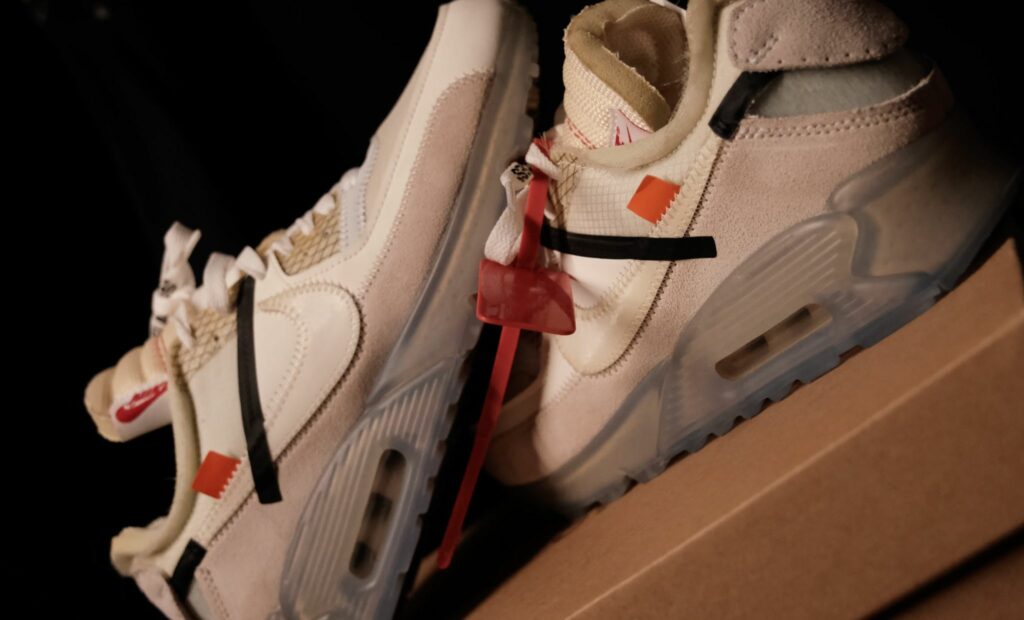Today we are talking to Jeffrey, the driving force behind Frontstreet. His love of sneakers and views on certain trends within the sneaker world form the basis of the conversation. Together with Jeffrey, we explore the dynamics of Frontstreet and the sneaker market from their perspective as founders.
1. Can you briefly introduce yourself and tell us how you got into the sneaker world?
Hi sneakerheads, I’m Jeffrey Suijkerbuijk, hoping to turn 55 this year and passionate about sneakers for most of my life. My love for sneakers certainly wasn’t something I grew up with, but developed around the age of 25. At that time, my collection consisted mainly of AM90s and AM1s, which suited my lifestyle at the time and my frequent visits to house/techno parties, many of which were still illegal and held in tunnels and abandoned buildings in the Benelux and the UK. Without these Nike models, you just weren’t a “real partygoer.”
2. When did you decide to make sneakers your business?
The real turning point came quite late, but more about that later in this interview. I’ve had a flair for business in various forms since I was a child. Everything in life is for sale and everything can be sold. I made a friend in the past, he’s American, and was stationed in Germany at the time. It must have been around 1997-1999. On those American bases, you can buy absolutely everything that is available in America itself. Complete shopping centers, including a Nike store. At the time, he brought me a pair of shoes from that Nike store and told me that they were impossible to find anywhere else in Europe.
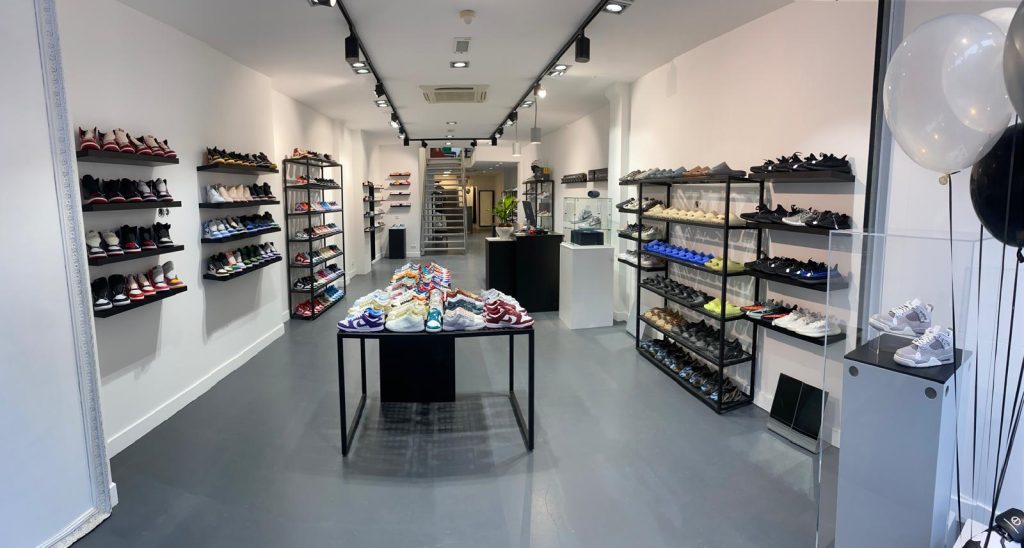
Inside the store – Frontstreet
3. How did you sell your first pair of sneakers, and what did you learn from that experience?
The first pair I ever managed to sell was the pair I had bought from that American. At the time, I was working in a supermarket distribution center, and one of the employees thought they were nice shoes and asked where I had gotten them. I explained where the pair came from, and after asking a few questions and trying them on, he wanted to buy them right away. Deal done, 50 guilders earned, he took the shoes and I went home in my socks. I realized that you can trade anything, as long as you have something that someone else likes. In the years that followed, my love for sneakers continued to grow with many pairs of Yeezys, a large collection of J4s, more AM1s, and, since 2019, SBs. I started trading with family, friends, and colleagues, and later added markets and Marktplaats to the mix. I really enjoyed it and was happy to see other people happy.
4. What were the biggest challenges in setting up your own store as a seller of exclusive sneakers?
In 2019, the idea of opening my own store was conceived. At the time, I was self-employed and working as a Logistics and Project Manager for several large companies. I traveled internationally a lot for work, but I was also active nationally, spending a lot of time in the car and working long hours. I wore suits a lot and always had at least one pair of sneakers with me so I could change shoes right after work. The comfort of a sneaker is so much better than a tight Van Bommel.
But then COVID-19 hit, and it seemed like it was going to throw a spanner in the works. However, I began to see the advantages of this amid all the sadness that was unfolding. Companies were going to have a harder time, some businesses closed immediately, others later, buildings became vacant, or existing vacancies could not be rented out. And that’s exactly where I saw a strong negotiating position. In my search, I found a property that had been vacant for some time and used that in my negotiations with the landlord. Combined with Corona, I secured a deal with 6 months’ rent-free. After signing the contract in early 2021, I wanted to open as soon as possible to maximize profits. To keep costs down, I decided to design the logo myself after coming up with my store name within a few days. I arranged for an interior designer and put painters to work. On April 4, 2021, the store opened at Voorstraat 5 in Utrecht. (Hence the name Frontstreet, which became 5Frontstreet on Instagram because Frontstreet was already taken.)
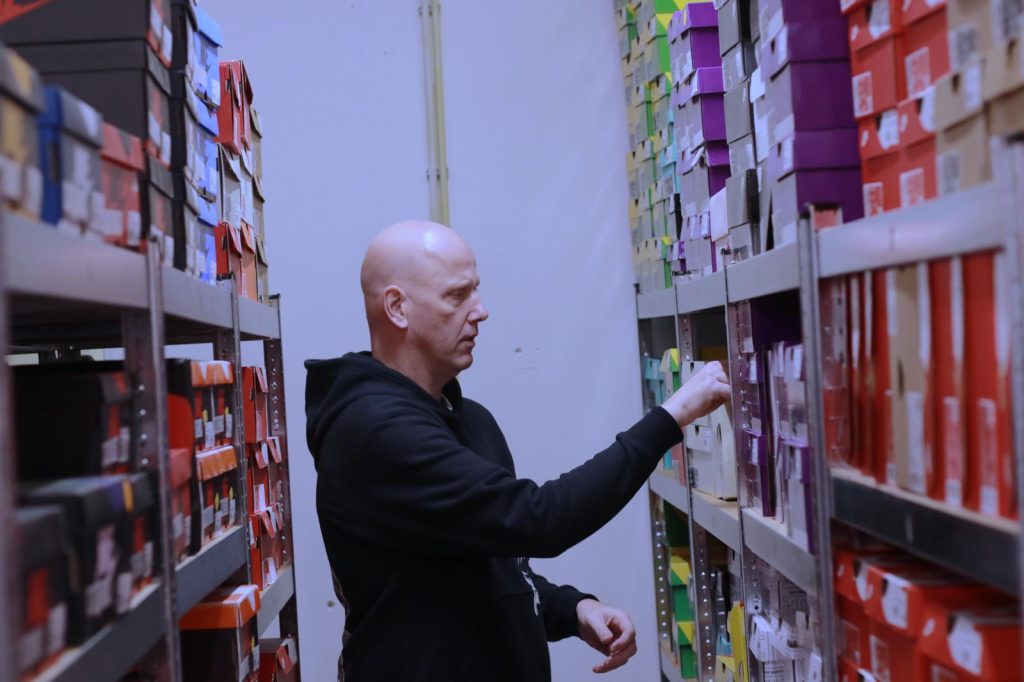
Jeffrey at the warehouse
5. How do you differentiate yourself from other sneaker resellers in an increasingly competitive market?
During and just after the coronavirus pandemic, there was a real explosion of store openings and smaller entrepreneurs all engaging in reselling. The reason for this was not only the hype surrounding sneakers at the time, but rather the shortage of sneakers through regular channels. Factories worldwide came to a standstill due to the pandemic, and exports and imports were largely halted. Retail companies received only a trickle of supplies. Young people were stuck at home and had to take online classes. Because everything was closed or required an appointment, they had little or no reason to go outside. But demand and trends continued. A simple AF1 was difficult or impossible to obtain, but if you did have one, you could sell it for serious money on platforms such as Instagram, Snapchat, Facebook, or Marktplaats. That story was naturally shared with friends and spread like wildfire. Not only within the Netherlands but worldwide, as social media has a rapid global reach.
Staying ahead of the curve wasn’t immediately difficult, but it certainly wasn’t easy either. Initially, I took advantage of the rapid growth of my store. The store was innovative for customers, had a look that was compared to American stores, and prices were often competitive with other resellers and platforms. Those other platforms in particular became important. We used this in our sales to customers. You could try on the shoe, smell it, and feel it, and if it was right, you could take it home immediately.
6. Which target group buys from you most often? (age, type of customer, region, etc.)
Our target group on Voorstraat was mainly younger people, aged 16-25. I think that had to do with the store’s appearance, the novelty and hype, combined with the pandemic and everything that was happening in the world at the time. Looking at our new location in a prime spot, where we have been for over 1.5 years now, that has certainly changed. This location attracts people of all ages.
We still sell a lot to the same age group of 16-25 year olds, but we also have customers aged 25-76. We see people over 40 in particular returning to buy from us regularly. As a result, we have a very broad audience, including tourists. Many customers who make purchases describe the store as special, with a wide selection and a clear layout, but they also appreciate the many exclusive pairs we have in stock.
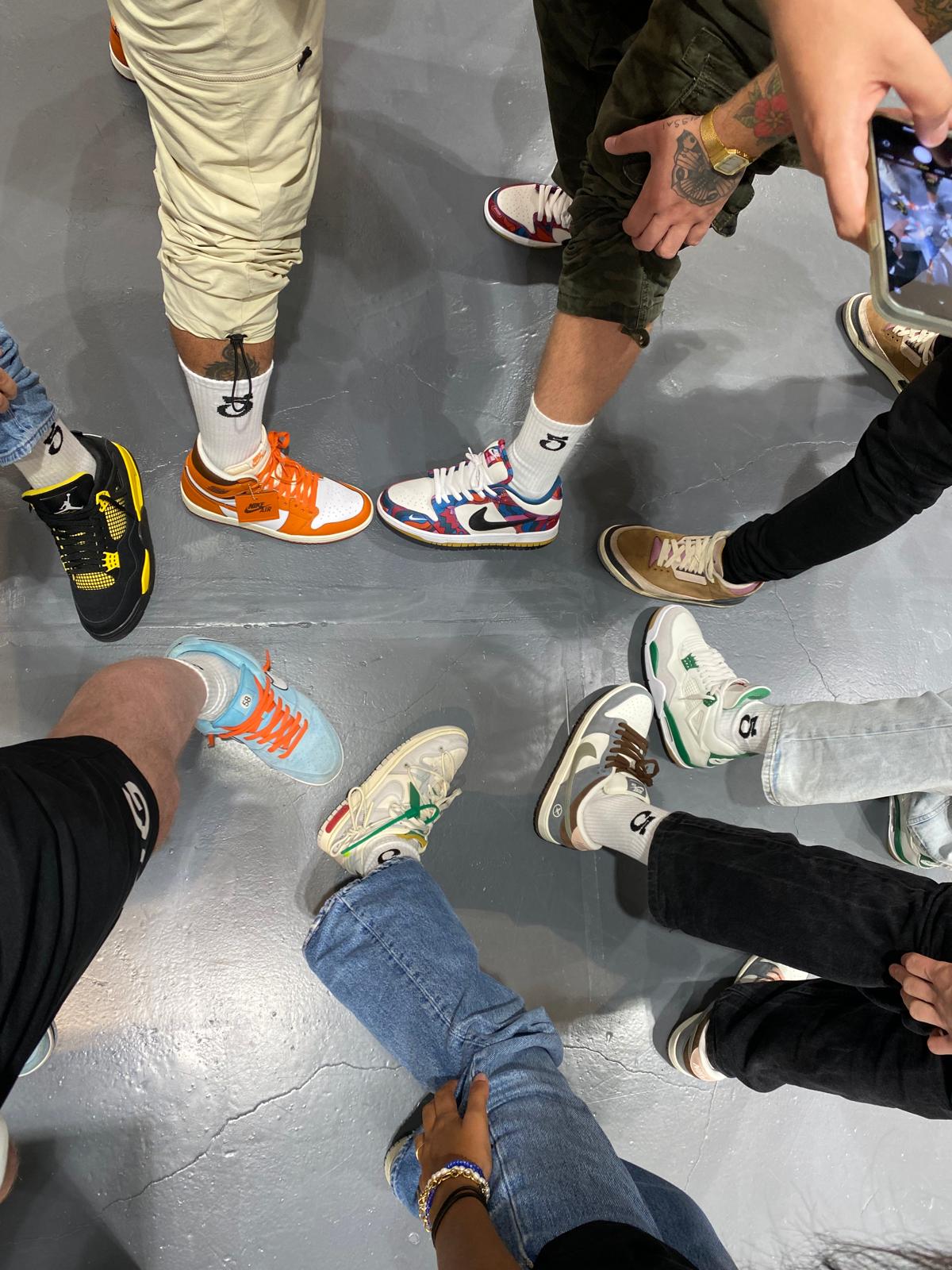
Frontstreet teaming up
7. How do you see the resale market evolving in recent years?
The evolution of the resell market is moving fast. This is certainly related to the fact that in recent years there has no longer been a pandemic, factories are running at full capacity again, designers and creators can work several years ahead once more, and as a result, there is a greater and more consistent supply in our market and across the world.
Four years ago, I would buy every pair at almost any price — it was sellable and in demand, and the store could make a profit on it, so it worked for everyone. Now? Now it’s completely different. I hardly buy from private sellers anymore, the number of resellers has been more than cut in half, prices have dropped drastically, and profits have shrunk significantly. Having the right contacts has always been important — that’s the same in any business. When I started the store, I had about 80 sneaker contacts. Today, that number has grown to over 3,000. Back then, I needed all 80 to get the right pairs. Out of my 3,000 contacts now, I might still use about 25. On top of that, I’m in dozens of groups where things are occasionally bought and sold.
So, things have changed. I now buy more from large suppliers, most of them in Europe. Often at relatively low prices and definitely below retail. This allows us to offer a more acceptable price point for the customer and stay competitive with other retailers. For example, since November ‘24 we’ve been selling our Adidas models in-store starting at €95 a pair. Even the most sought-after pairs — which makes us highly competitive — and as a result, we can barely keep up with demand.
On top of that, trends are extremely important for us. Getting in on the right models at the right time is a must. Fortunately, we often manage to stay on top of that. We also continue to buy large quantities of exclusives; demand for, say, Travis Scott models remains steadily high. Whether or not a model becomes popular depends on several factors. Those factors determine whether we’ll invest in it — or let it pass.
8. What was the biggest challenge in opening the store?
Continuing to surprise the customer. After the opening, this became extremely important. Some came by several times a month, including resellers. They would look for all the new items that had arrived. They showed interest, lingered, and engaged in conversation. They sought out and fished for my contacts, and were amazed by the entire business.
I was convinced that my insight and knowledge were sufficient to run the store, but if you don’t have customers, or retain them, you don’t have a business and therefore no existence. Even now, I still have to keep surprising customers with the store, still at the model level but even more so at the price level. Not having the right model at the right price means no buying customers. The store does not do consignment, unlike almost every other store. It’s a store, low risk, something that doesn’t suit me. Give me excitement and challenge, buy everything I like for the store, sneakers, clothing, skateboards, souvenirs, and much more. In any case, the store will have to continue to grow to retail level with an exclusive section.
This will allow us to continue to surprise our customers. Online, we connect to various platforms; online shopping is still popular, WOOVIN being one example. There are still some other exciting challenges ahead of us.
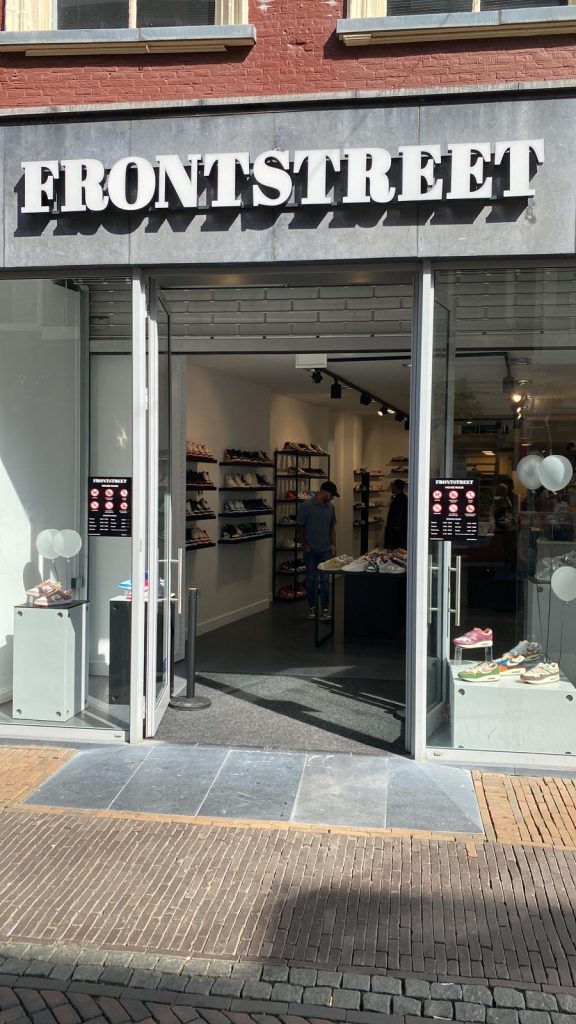
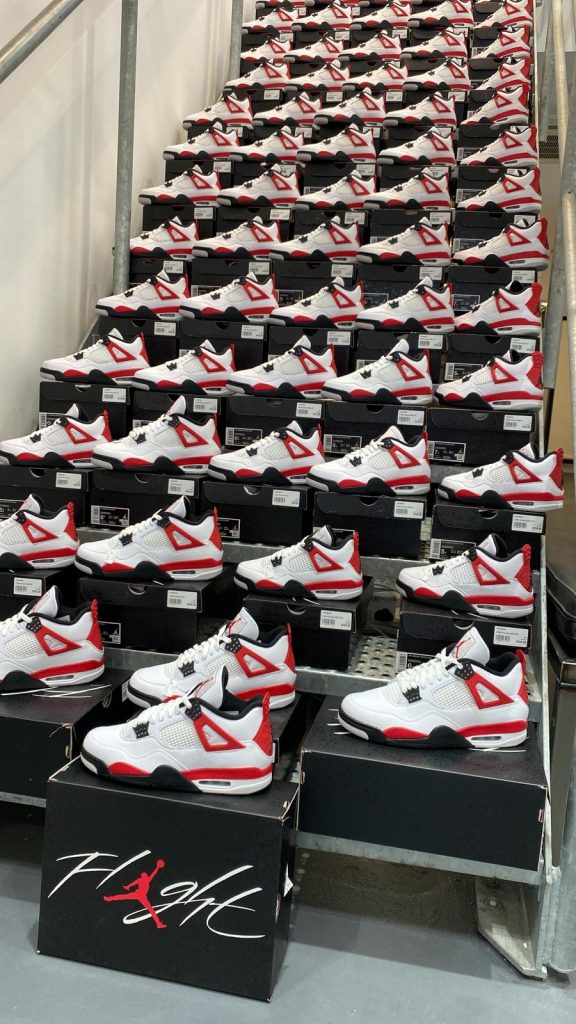
(L) Entrance at Lange Elisabethstraat 27 Utrecht & (R) Jordan 4 Red Cement in stock
Interview by – Jeffrey Suijkerbuijk
Content Writer – Tom Perry






